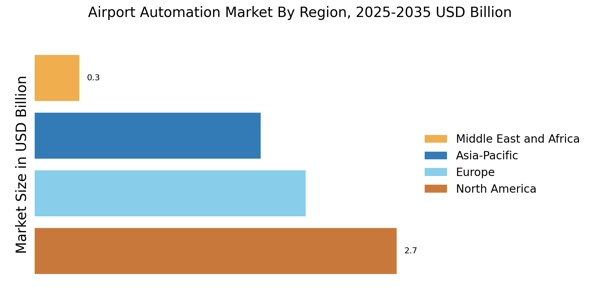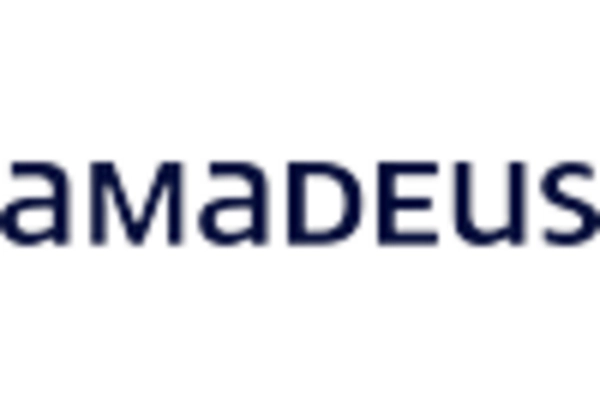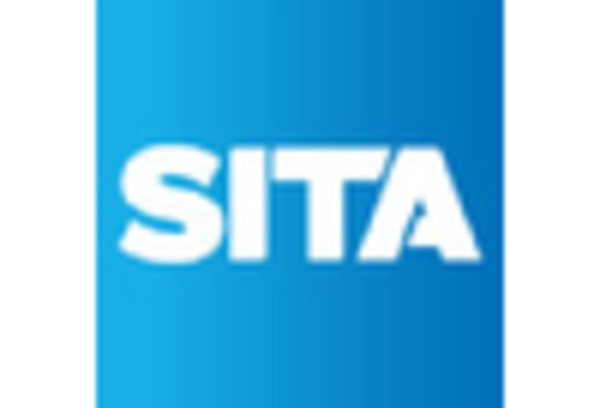The Airport Automation Market is currently characterized by a dynamic competitive landscape, driven by technological advancements and an increasing demand for efficiency in airport operations. Key players such as Siemens (Germany), Thales (France), and Honeywell (United States) are strategically positioning themselves through innovation and partnerships. Siemens (Germany) focuses on integrating smart technologies into airport infrastructure, enhancing operational efficiency and passenger experience. Thales (France) emphasizes cybersecurity and data analytics, ensuring secure and efficient airport operations. Honeywell (United States) is leveraging its expertise in automation and IoT to streamline processes, thereby improving overall airport management. Collectively, these strategies foster a competitive environment that prioritizes technological integration and operational excellence.
In terms of business tactics, companies are increasingly localizing manufacturing and optimizing supply chains to enhance responsiveness to market demands. The Airport Automation Market appears moderately fragmented, with several key players exerting influence over various segments. This structure allows for a diverse range of solutions, catering to the specific needs of airports worldwide. The collective influence of these major players shapes market dynamics, as they compete not only on technology but also on service delivery and customer engagement.
In August 2025, Siemens (Germany) announced a partnership with a leading airport operator to implement a fully automated baggage handling system. This strategic move is significant as it underscores Siemens' commitment to enhancing operational efficiency through automation, potentially reducing turnaround times and improving passenger satisfaction. The collaboration is expected to set a new standard in baggage handling, showcasing Siemens' innovative capabilities in the airport automation sector.
In September 2025, Thales (France) launched a new cybersecurity solution tailored for airport operations, aimed at safeguarding critical infrastructure against emerging threats. This initiative highlights Thales' focus on integrating advanced security measures into airport automation systems, which is increasingly vital in today's digital landscape. By prioritizing cybersecurity, Thales positions itself as a leader in ensuring the safety and reliability of automated airport operations, thereby enhancing its competitive edge.
In July 2025, Honeywell (United States) unveiled a new IoT-based platform designed to optimize airport resource management. This platform allows for real-time monitoring and analytics, enabling airports to make data-driven decisions. The introduction of this technology reflects Honeywell's strategy to leverage IoT for operational efficiency, potentially transforming how airports manage resources and respond to passenger needs. This move not only strengthens Honeywell's market position but also aligns with the broader trend of digital transformation in the industry.
As of October 2025, current competitive trends in the Airport Automation Market are heavily influenced by digitalization, sustainability, and the integration of artificial intelligence. Strategic alliances among key players are shaping the landscape, fostering innovation and enhancing service offerings. Looking ahead, competitive differentiation is likely to evolve, with a shift from price-based competition to a focus on technological innovation, reliability in supply chains, and enhanced customer experiences. This transition suggests that companies will need to invest in cutting-edge technologies and sustainable practices to maintain a competitive advantage.


















Leave a Comment